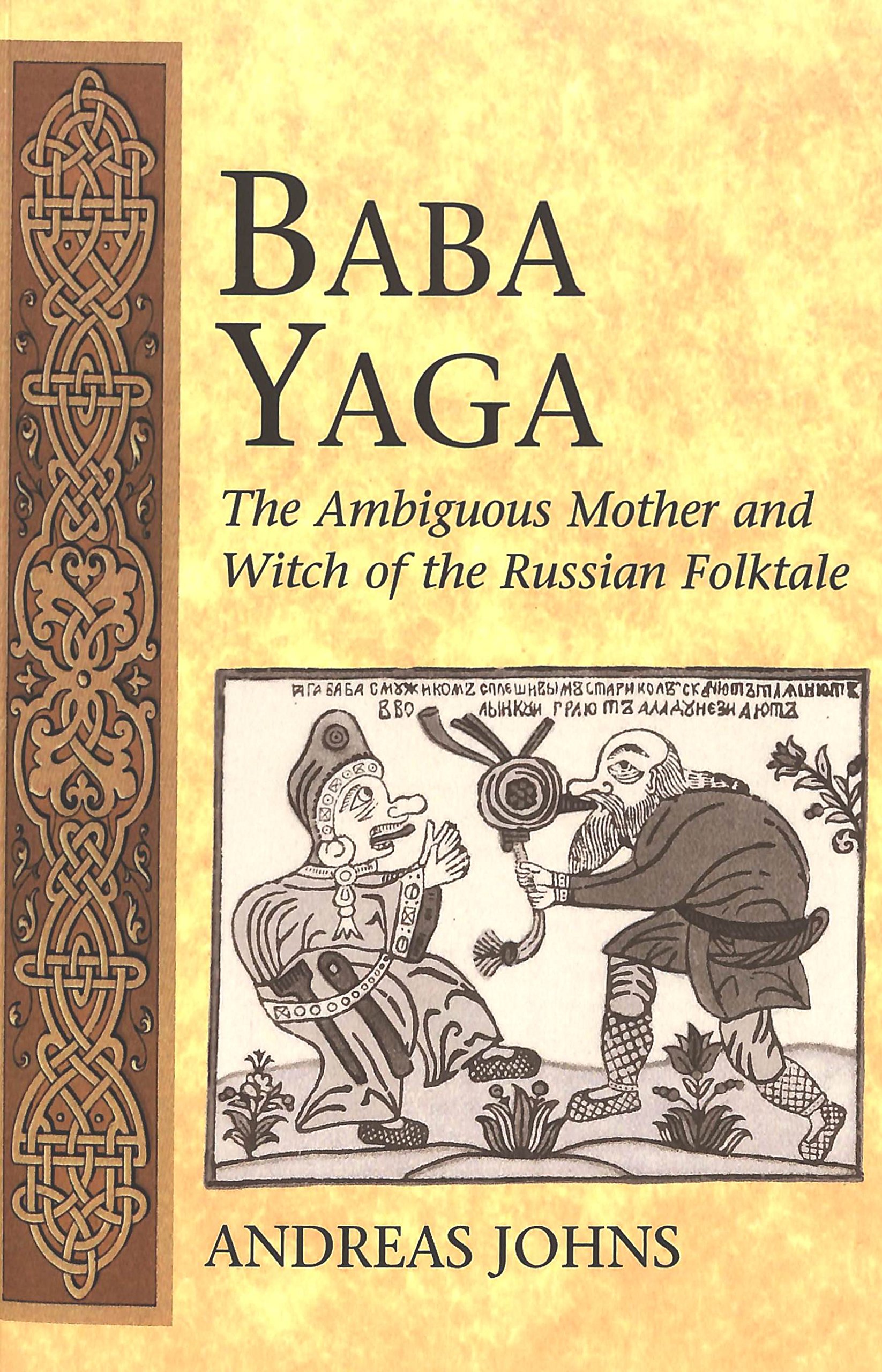Yaga intends to eat the boy. She is often the mother of three daughters in Russian folklore, who are present in most variants of this tale. The first daughter is tasked with putting the boy in the oven, and asks him to sit on the bread spatula. He lies down but sticks his limbs out so that he won't fit into the oven. The daughter insists that he sit the right way; he plays dumb and asks her to show him how. When she does so, he shoves her in the oven and roasts her instead.
And if we think the Grimms' "Hansel and Gretel" are violent for shoving the witch in the oven, this boy takes it a step further; he serves the meat of the daughter to Baba Yaga, who comments on how sweet his meat is, and does the same thing with the other daughters, ending by defeating Yaga herself.
The most interesting thing about this Russian version is its similarity to a local custom of symbolically "baking" children. Andreas Johns says, "It consisted of putting an infant on a bread spatula and into a warm oven, and in some cases putting the child in and taking it out a number of times, with an accompanying dialogue urging the performer of the ritual to bake away the child's illness." A similar ritual in Romania involves holding a child over boiling water to cure it of "the evil eye".
Although it seems shocking, it was not meant to be an abusive thing, but viewed as positive and nurturing, as fire was seen to have healing properties. Still, I can't help but wonder how hot the oven was and how long they held the kid in there...but it seems reasonable to think that the tale could have reflected a child's anxieties concerned with this ritual.
John Augustus Atkinson-Russian oven drawing-1803
Johns also reminds us of how essential an oven was to a family in the middle of cold Russian winters, as their primary source of heat. We are reminded of the paradox of fire, which is both necessary for survival, and also a dangerous instrument of injury and sometimes death. From Wikipedia: "As well as warming and cooking, the Russian oven can be used for washing. A grown man can easily fit inside, and during World War II some people escaped the Nazis by hiding in ovens.[3][4][8][9] In Ancient Russia the oven was used to treat winter diseases by warming the sick person's body inside it."
So maybe this ritual wasn't as close to child abuse as it appears to us; it seems like ovens could be manipulated to become a sort of sauna. Still, I would imagine there would be some anxiety about keeping young children from climbing in...
Information from Baba Yaga: The Ambiguous Mother and Witch of the Russian Folktale by Andreas Johns




That settles it. I need this book! I've read a lot about the Russian oven rituals - "baking" children included (I'm sure I posted on it a LONG time ago but I can't find it at the moment) but I hadn't connected the Hansel, apple Snow White thing before. (See? This is why you need to move to LA so we can have a tea and fairy tales chat every week!)
ReplyDeleteHaha you have no idea how tempting that is, especially during the cold January weather Chicago has "blessed" us with lately! But seriously, the book is great. Very detailed, lots of really interesting info-Baba Yaga is not the easiest to find research on!
DeleteI am actually taking a course about Russian fairy tales as I'm writing this, and I had to read a similar tale, only the hero did himself in by ignoring advice. But the three daughters being baked idea was in there. It did seem rather spiteful for the hero to serve the kids back to the mother--I mean, regardless of what they were doing to him it just seemed weird to do to children in general.
ReplyDeleteBut then again, maybe the tale excused that because they were evil? I didn't really think about the idea of healing children by boiling away disease, and even if there was a parallel I was too focused on what the hero was doing to the daughters anyways.
So jealous you get to take a class on Russian fairy tales!!!
DeleteIn the book, Johns does outline many of the plot variants of this tale, but I just gave a brief summary to avoid bogging readers down with too many details. But I do remember him mentioning that the hero is often warned not to do XYZ and as a result gets abducted.
It really is pretty disturbing to give Yaga's daughters the same punishment, especially since in many versions, they aren't her daughters but merely her servants! I'm not sure if we're supposed to assume anyone related to Baba Yaga in any way is evil too-in Vasilisa the Brave, Vasilisa essentially becomes Yaga's servant for a while too...but they *were* about to murder another child. That element of kids killing each other is creepy on the same level of "The Children Who Played Butcher With Each Other"
In Terry Pratchett's novel "The Wee Free Men", the protagonist, a young witch called Tiffany Aching, remembers how her grandmother put a dead lamb in the oven and hour later, when she opened it, the lamb was alive and well. When Tiffany got older, she understood that the lamb wasn't really dead and the fire in the oven wasn't hot enough to burn it, but simply warmed it up. Then she comments: “This time it had been magic. And it didn't stop being magic just because you found out how it was done.”
ReplyDeleteWhat a cool concept, the idea of an oven reversing death/sickness into life/health! And how fascinating that ovens have been used so differently in the past
Delete